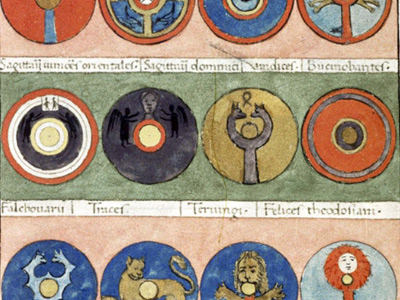Battle of Adrianople (378 AD)
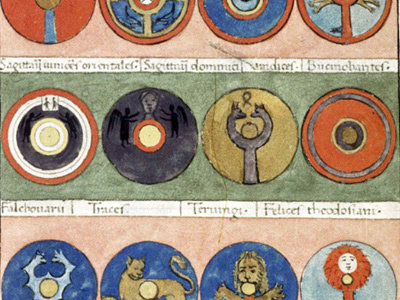
The Battle of Adrianople (9 August 378), sometimes known as the Battle of Hadrianopolis, was fought between an Eastern Roman army led by the Eastern Roman Emperor Valens and Gothic rebels (largely Thervings as well as Greutungs, non-Gothic Alans, and various local rebels) led by Fritigern. The battle took place about 13 km (8 mi) north of Adrianople (modern Edirne in European Turkey, near the border with Greece and Bulgaria) in the Roman province of Thracia. It ended with an overwhelming victory for the Goths and the death of Emperor Valens.
Part of the Gothic War (376–382), the battle is often considered the start of the process which led to the fall of the Western Roman Empire in the 5th century.
Background
In 376 AD, displaced by the invasions of the Huns, the Goths, led by Alavivus and Fritigern, asked to be allowed to settle in the Eastern Roman Empire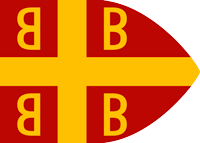 The Byzantine Empire, also referred to as the Eastern Roman Empire or Byzantium, was the continuation of the Roman Empire primarily in its eastern provinces during Late Antiquity and the Middle Ages, when its capital city was Constantinople. It survived the fragmentation and fall of the Western Roman Empire in the 5th century AD and continued to exist for an additional thousand years until the fall of Constantinople to the Ottoman Empire in 1453.. Hoping that they would become farmers and soldiers, the Eastern Roman emperor Valens allowed them to establish themselves in the Empire as allies (foederati). However, once across the Danube (and in Roman territory), the dishonesty of the provincial commanders Lupicinus and Maximus led the newcomers to revolt after suffering many hardships. Valens (of the Eastern Empire) then asked Gratian, the western emperor, for reinforcements to fight the Goths. Gratian sent the general Frigeridus with reinforcements, as well as the leader of his guards, Richomeres. For the next two years preceding the battle of Adrianople there were a series of running battles with no clear victories for either side.
The Byzantine Empire, also referred to as the Eastern Roman Empire or Byzantium, was the continuation of the Roman Empire primarily in its eastern provinces during Late Antiquity and the Middle Ages, when its capital city was Constantinople. It survived the fragmentation and fall of the Western Roman Empire in the 5th century AD and continued to exist for an additional thousand years until the fall of Constantinople to the Ottoman Empire in 1453.. Hoping that they would become farmers and soldiers, the Eastern Roman emperor Valens allowed them to establish themselves in the Empire as allies (foederati). However, once across the Danube (and in Roman territory), the dishonesty of the provincial commanders Lupicinus and Maximus led the newcomers to revolt after suffering many hardships. Valens (of the Eastern Empire) then asked Gratian, the western emperor, for reinforcements to fight the Goths. Gratian sent the general Frigeridus with reinforcements, as well as the leader of his guards, Richomeres. For the next two years preceding the battle of Adrianople there were a series of running battles with no clear victories for either side.
In 378, Valens decided to take control himself. Valens would bring more troops from Syria and Gratian would bring more troops from Gaul.
Valens left Antioch for Constantinople, and arrived on the 30th of May. He appointed Sebastianus, newly arrived from Italy, to reorganize the Roman armies already in Thrace. Sebastianus picked 2,000 of his legionaries and marched towards Adrianople. They ambushed some small Gothic detachments. Fritigern assembled the Gothic forces at Nicopolis and Beroe (now Stara Zagora) to deal with this Roman threat.
Gratian had sent much of his army to Pannonia when the Lentienses (part of the Alamanni) attacked across the Rhine. Gratian recalled his army and defeated the Lentienses near Argentaria (near modern-day Colmar, France France, officially the French Republic is transcontinental country predominantly located in Western Europe and spanning overseas regions and territories in the Americas and the Atlantic, Pacific and Indian Oceans. France reached its political and military zenith in the early 19th century under Napoleon Bonaparte, subjugating much of continental Europe and establishing the First French Empire.). After this campaign, Gratian, with part of his field army, went east by boat; the rest of his field army went east overland. The former group arrived at Sirmium in Pannonia and at the Camp of Mars (a fort near the Iron Gates), 400 kilometers from Adrianople, where some Alans attacked them. Gratian's group withdrew to Pannonia shortly thereafter.
France, officially the French Republic is transcontinental country predominantly located in Western Europe and spanning overseas regions and territories in the Americas and the Atlantic, Pacific and Indian Oceans. France reached its political and military zenith in the early 19th century under Napoleon Bonaparte, subjugating much of continental Europe and establishing the First French Empire.). After this campaign, Gratian, with part of his field army, went east by boat; the rest of his field army went east overland. The former group arrived at Sirmium in Pannonia and at the Camp of Mars (a fort near the Iron Gates), 400 kilometers from Adrianople, where some Alans attacked them. Gratian's group withdrew to Pannonia shortly thereafter.
After learning of Sebastian's success against the Goths, and of Gratian's victory over the Alamanni, Valens was more than ready for a victory of his own. He brought his army from Melantias to Adrianople, where he met with Sebastian's force. On 6 August, reconnaissance informed Valens that about 10,000 Goths were marching towards Adrianople from the north, about 25 kilometers away. Despite the difficult ground, Valens reached Adrianople where the Roman army fortified its camp with ditch and rampart.
Richomeres, sent by Gratian, carried a letter asking Valens to wait for the arrival of reinforcements from Gratian before engaging in battle. Valens' officers also recommended that he wait for Gratian, but Valens decided to fight without waiting, ready to claim the ultimate prize.
The Goths were also watching the Romans, and on 8 August, Fritigern sent an emissary to propose a peace and an alliance in exchange for some Roman territory. Sure that he would be victorious due to his supposed numerical superiority, Valens rejected these proposals. However, his estimates did not take into consideration a part of the Gothic cavalry that had gone to forage further away.
Composition of the Roman troops
Valens' army may have included troops from any of three Roman field armies: the Army of Thrace, based in the eastern Balkans, but which may have sustained heavy losses in 376–377, the 1st Army in the Emperor's Presence, and the 2nd Army in the Emperor's Presence, both based at Constantinople in peacetime but committed to the Persian frontier in 376 and sent west in 377–378.
Valens' army included units of veterans, men accustomed to war. It comprised seven legions — among which were the Legio I Maximiana and imperial auxiliaries — of 700 to 1000 men each. The cavalry was composed of mounted archers (sagittarii) and Scholae (the imperial guard). However, these attacked precipitately, while peace negotiations were going on, and precipitately fled. There were also squadrons of Arab cavalry, but they were more suited to skirmishes than to pitched battle.
Composition of the Gothic forces
The Gothic armies were mostly infantry, with some cavalry, which was significant in the battle of Adrianople.
There were probably two main Gothic armies south of the Danube. Fritigern led one army, largely recruited from the Therving exiles, while Alatheus and Saphrax led another army, largely recruited from the Greuthung exiles.
Fritigern brought most if not all of his fighters to the battle, and appears to have led the force the Romans first encountered. Alatheus and Saphrax brought their cavalry into action "descending like a thunderbolt" against the Romans. These forces included Alans.
Ammianus records that the Roman scouts estimated 10,000 Gothic troops; but Ammianus dismissed this as an underestimate. This appears to be due to Alatheus and Saphrax's forces being away when the Roman scouts estimated the Goth's numbers before battle. Several modern historians have estimated the strength of the Gothic armies at 12,000–15,000.
Ammianus notes the important role of the Gothic cavalry. Charles Oman, believing that the cavalry were the majority of the Gothic force, interpreted the Battle of Adrianople as the beginning of the dominance of cavalry over infantry for the next thousand years. Some other historians have taken the same view. Burns and other recent historians argue that the infantry were the vast majority of the Gothic force, and that the battle had little effect on the relationship between infantry and cavalry.
Battle
On the morning of 9 August, Valens decamped from Adrianople, where he left the imperial treasury and administration under guard. The reconnaissance of the preceding days informed him of the location of the Gothic camp north of the city. Valens arrived there after marching for seven hours over difficult terrain.
The Roman troops arrived tired and dehydrated, facing the Gothic camp that had been set up on the top of a hill. The Goths, except for their cavalry, defended their wagon circle, inside of which were their families and possessions. Fritigern's objective was to delay the Romans, in order to give enough time for the Gothic cavalry to return. The fields were burnt by the Goths to delay and harass the Romans with smoke, and negotiations began for an exchange of hostages. The negotiations exasperated the Roman soldiers who seemed to hold the stronger position, but they gained precious time for Fritigern.
Some Roman units began the battle without orders to do so, believing they would have an easy victory, and perhaps over-eager to exact revenge on the Goths after two years of unchecked devastation throughout the Balkans. The imperial scholae of shield-archers under the command of the Iberian prince Bacurius attacked, but lacking support they were easily pushed back. Then the Roman left-wing reached the circle of wagons, but it was too late. At that moment, the Gothic cavalry, returning from a foraging expedition, arrived to support the infantry. The cavalry surrounded the Roman troops, who were already in disarray after the failure of the first assault. The Romans retreated to the base of the hill where they were unable to maneuver, encumbered by their heavy armor and long shields. The casualties, exhaustion, and psychological pressure led to a rout of the Roman army. The cavalry continued their attack, and the killing continued until nightfall.
In the rout, the Emperor himself was abandoned by his guards. Some tried to retrieve him, but the majority of the cavalry fled. Valens' final fate is unknown; he may have died anonymously on the field. His body was never found. An alternative story circulated after the battle that Valens had escaped the field with a bodyguard and some eunuchs, and hid in a peasant's cottage. The enemy attempted to pillage the cottage, apparently unaware Valens was inside. Valens' men shot arrows from the second floor to defend the cottage and in response the Goths set the cottage on fire. The bodyguard leaped out the window and told the Goths who was inside, but it was too late. Valens perished in the flames.
Aftermath
The Goths immediately marched to the city of Adrianople and attempted to take it; Ammianus gives a detailed account of their failure. Ammianus refers to a great number of Roman soldiers who had not been let into the city and who fought the besieging Goths below the walls. According to the historian Ammianus Marcellinus, a third of the Roman army succeeded in retreating, but the losses were uncountable. Many officers, among them the general Sebastian, were killed in the worst Roman defeat since the Battle of Edessa, the high point of the Crisis of the Third Century. The battle was a significant blow for the late Empire, resulting in the destruction of the core army of the eastern Empire, the deaths of valuable administrators, and the destruction of all of the arms factories on the Danube following the battle. The lack of reserves for the army worsened the recruitment crisis. Despite the losses, the battle of Adrianople did not mark the end of the Roman Empire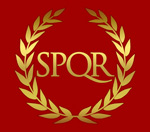 The Roman Empire was the post-Republican period of ancient Rome. As a polity, it included large territorial holdings around the Mediterranean Sea in Europe, North Africa, and Western Asia, and was ruled by emperors. The first two centuries of the Roman Empire saw a period of unprecedented stability and prosperity known as the Pax Romana ('Roman Peace'). The Empire was later ruled by multiple emperors who shared control over the Western Roman Empire and the Eastern Roman Empire. because the imperial military power was only temporarily crippled.
The Roman Empire was the post-Republican period of ancient Rome. As a polity, it included large territorial holdings around the Mediterranean Sea in Europe, North Africa, and Western Asia, and was ruled by emperors. The first two centuries of the Roman Empire saw a period of unprecedented stability and prosperity known as the Pax Romana ('Roman Peace'). The Empire was later ruled by multiple emperors who shared control over the Western Roman Empire and the Eastern Roman Empire. because the imperial military power was only temporarily crippled.
The defeat at Adrianople signified that the barbarians, fighting for or against the Romans, had become powerful adversaries. The Goths, though partly tamed by Valens' successor Theodosius I (who accepted them once more as allies), were never expelled, exterminated, or assimilated; they remained as a distinct entity within its frontiers, for a few years allies, later independent and often hostile.
The long-term implications of the battle of Adrianople for the art of war have often been overstated, with many 20th-century writers repeating Sir Charles Oman's idea that the battle represented a turning point in military history, with heavy cavalry triumphing over Roman infantry and ushering in the age of the Medieval knight. This idea was overturned by T. S. Burns in 1973. Burns shows that the Gothic army's cavalry arm was fairly small, that Valens would actually have had more cavalry and that while the role of Fritigern's cavalry was critical to his victory, the battle was a mainly infantry versus infantry affair. The Medieval knight was not to rise for several centuries after Adrianople. It is also often stated that the defeat at Adrianople led to changes in the composition of the late Roman Army and an increase in the use of cavalry. In fact, this process had been going on in the Roman Army long before AD 378, with cavalry increasing its role and status in the Army from at least the time of the Emperor Gallienus (AD 253 to 260).
HISTORY
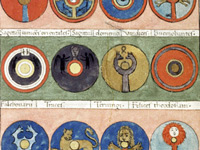
RESOURCES
This article uses material from the Wikipedia article "Battle of Adrianople (378 AD)", which is released under the Creative Commons Attribution-Share-Alike License 3.0.
© Stories Preschool. All Rights Reserved.
